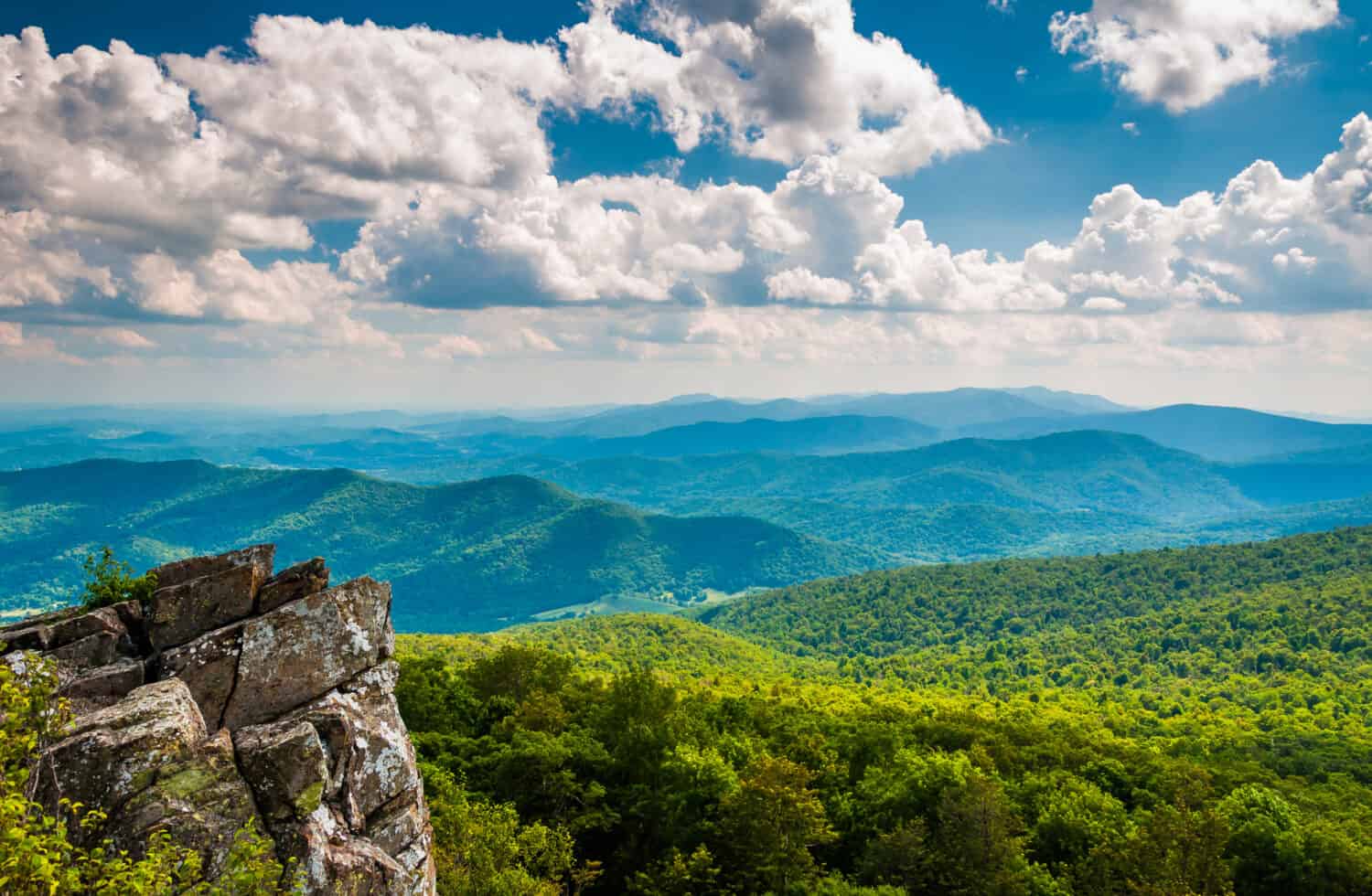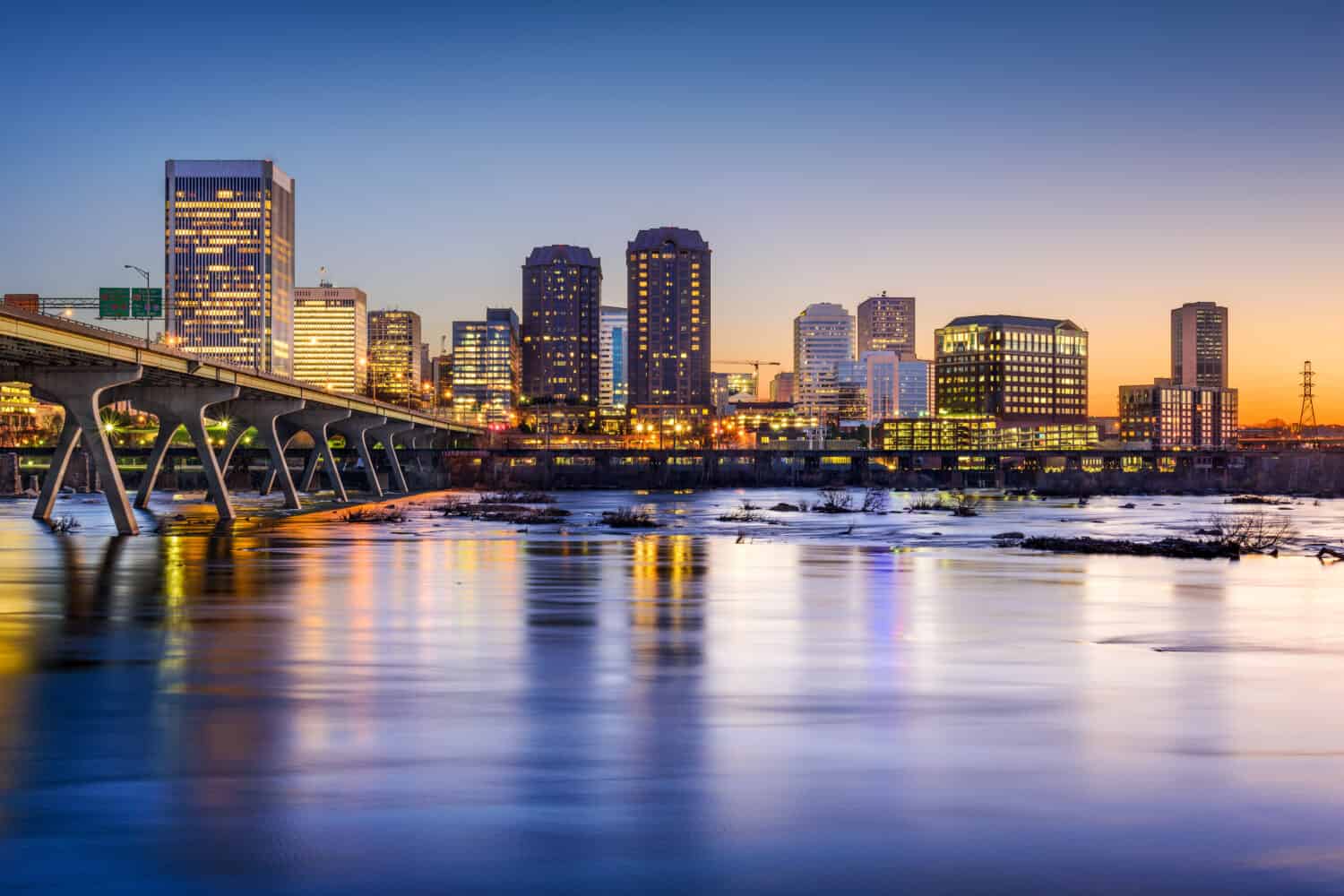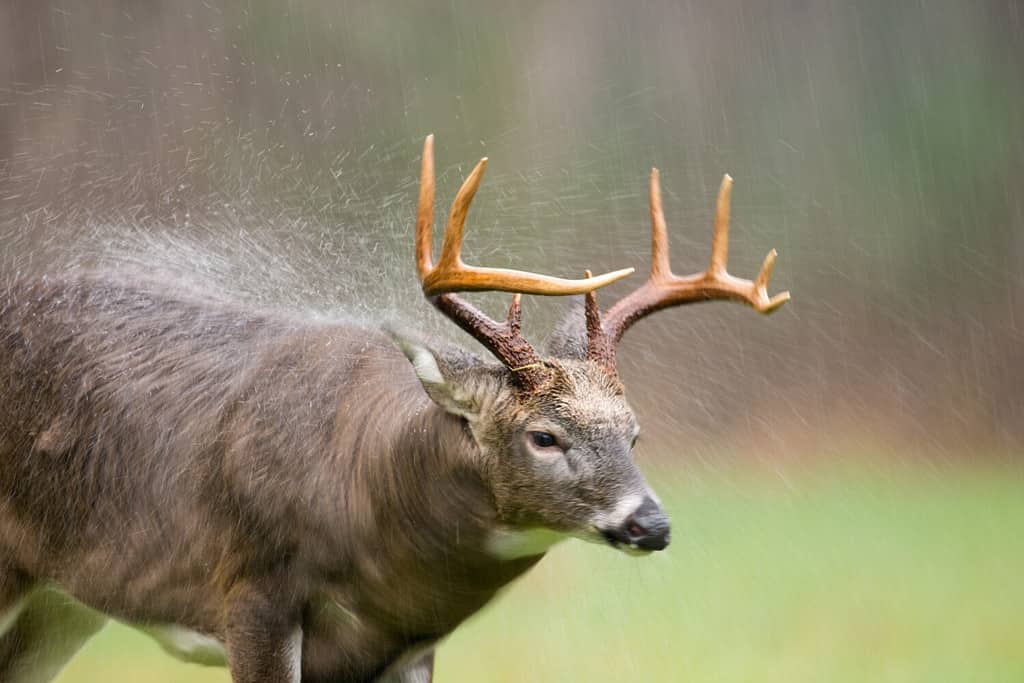How Tall Is Virginia? Total Distance North to South
Blue Ridge Mountains

©Jon Bilous/Shutterstock.com
Virginia’s most prominent geographic feature is the Blue Ridge Mountains, part of the larger Appalachian Mountain range. These mountains are famous for their stunning vistas, lush forests, and numerous hiking opportunities. Shenandoah National Park, located in this region, is home to the scenic Skyline Drive, a popular attraction offering panoramic views of the surrounding landscapes.
To the west of the Blue Ridge Mountains lies the Shenandoah Valley, a fertile and picturesque area flanked by mountain ranges on both sides. The valley is known for its agricultural productivity and is often called the “Breadbasket of the Confederacy” due to its importance during the American Civil War.
Virginia’s geography is incredibly diverse, encompassing coastal areas, fertile plains, mountain ranges, and picturesque valleys. This diversity contributes to the state’s natural beauty. It supports various economic activities and outdoor recreational opportunities, making Virginia a unique and dynamic part of the United States.
Overall Size of Virginia

©ESB Professional/Shutterstock.com
Virginia boasts a land area that covers approximately 42,775 square miles (110,787 square kilometers). In terms of size, it ranks as the 35th largest state in the United States. Its dimensions extend approximately 200 miles (322 kilometers) from its northernmost point to its southernmost point, and its width spans roughly 430 miles (692 kilometers) from east to west at its widest point.
With its moderate land area, Virginia represents about 2.2% of the total landmass of the United States. This percentage may seem small compared to the country’s vast size. Still, Virginia’s geographic diversity, ranging from the coastal plains to the Blue Ridge Mountains, makes it a microcosm of various American landscapes.
As of the 2023 estimate, Virginia has a population of approximately 8,820,504 million people, making it the 12th most populous state in the U.S. Its population density varies significantly across regions, with the Northern Virginia metropolitan area, including cities like Arlington and Fairfax, being one of the most densely populated areas in the state.
Virginia’s population has been growing steadily, driven partly by economic opportunities, government employment (due to its proximity to the nation’s capital, Washington, D.C.), and diverse industries. The state’s history, cultural attractions, educational institutions, and natural beauty also contribute to its appeal as a place to live and work.
Where Is Virginia Located on the Map?
Virginia is a state in the Mid-Atlantic and Southeastern regions of the United States. The Old Dominion State is between the Atlantic Coast and the Appalachian Mountains.
The state borders several states including Maryland to the north, West Virginia and Kentucky to the west, North Carolina to the south, and Tennessee to the southwest. But it is most famous for its proximity to Washington D.C. This makes Virginia a key area for government-related employment and activity.
Virginia Height in Comparison to Other States
Let’s compare Virginia’s length from north to south to some other states.
| Alaska | 1,420 miles (2,285 kilometers) |
| Texas | 801 miles (1,289 kilometers) |
| California | 770 miles (1,239 kilometers) |
| Florida | 447 miles (719 kilometers) |
| Maine | 320 miles (515 kilometers) |
| Oregon | 295 miles (475 kilometers) |
| New York | 285 miles (455 kilometers) |
| Virginia | 200 miles (322 kilometers) |
| Kentucky | 187 miles (302 kilometers) |
| North Carolina | 184 miles (296 kilometers) |
Wildlife In Virginia

©Tony Campbell/Shutterstock.com
Virginia’s diverse geography, ranging from coastal plains to mountainous regions, provides a habitat for various wildlife species. The state’s rich biodiversity supports numerous mammals, birds, reptiles, amphibians, and fish.
Mammals
- Black Bear: Virginia is home to a healthy population of black bears, particularly in the western part of the state. Shenandoah National Park and the Blue Ridge Mountains are prime bear habitats.
- Bottlenose Dolphin: You can spot bottlenose dolphins along Virginia’s coastline, particularly in the Chesapeake Bay and the Atlantic Ocean. Whale-watching tours are prevalent in this region.
- Eastern Coyote: Coyotes have become increasingly common in Virginia in recent years. They are adaptable predators and live in both rural and suburban environments.
- Red Fox: Red foxes are common in Virginia. They have an extensive adaptability to various habitats, from urban areas to rural landscapes.
- White-Tailed Deer: This species lives abundantly in Virginia. They are a favorite among wildlife enthusiasts and are a key species for hunters during the deer hunting season.
Birds
- Bald Eagle: Virginia has made significant strides in bald eagle conservation. These majestic birds of prey can be spotted along the state’s rivers, lakes, and coastal areas.
- Eastern Bluebird: This striking bird is the official state bird of Virginia. It’s a common sight in fields and open areas, often perched on fences and utility lines.
- Wild Turkey: Virginia’s woodlands and fields are inhabited by wild turkeys.
Fish and Aquatic Species
- Brook Trout: Virginia’s mountain streams and rivers are ideal habitats for brook trout, a native and prized sportfish.
- Chesapeake Bay Blue Crab: The Chesapeake Bay is famous for its blue crab population. These crabs are a staple in Virginia’s seafood industry.
- Striped Bass (Rockfish): Virginia’s rivers and coastal waters are home to striped bass, also called rockfish. They are popular among anglers and a critical species for the state’s fishing industry.
Reptiles
- Eastern Box Turtle: This land turtle is the state reptile of Virginia. The eastern box turtle, with its colorful markings and unique hinged shell, lives in forests, fields, and gardens across the state. It’s known for its distinctive box-like shell.
- Eastern Timber Rattlesnake: Virginia also has various snake species, including the timber rattlesnake. These venomous snakes are found in the state’s wooded areas.
Conservation efforts and protected areas in Virginia, such as national parks, wildlife refuges, and state forests, play a vital role in preserving the state’s diverse wildlife populations. Whether you’re an avid birdwatcher, angler, or wildlife enthusiast, Virginia offers numerous opportunities to observe and appreciate its unique flora and fauna.









